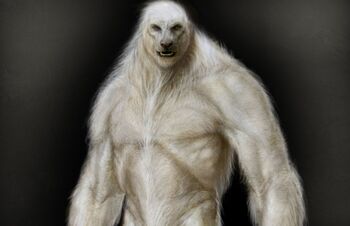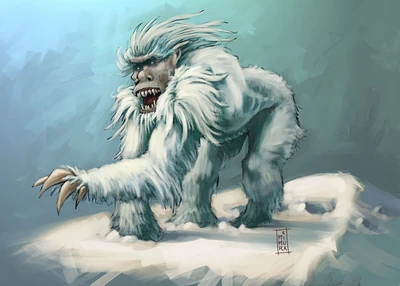
Yeti Is Real, DNA Proves It, Claims Scientist Bryan Sykes
Yeti Is Real, DNA Proves It, Claims Scientist Bryan Sykes
As the icy wind and swirling snow had died away, a rugged New Zealander, savagely stung and slashed by the storm, ventured across the eerie stillness of the Nepalese highlands. Sir Edmund Hillary and Tenzing Norgay, the first men to climb Mt. Everest, launched the first of many rigorous expeditions to find the yeti, the “glacier giant” of the Himalayas. In 1953, the two men famously discovered questionable scalps and footprints. This year, the numerous expeditions come to a close, after a British geneticist, Bryan Sykes, concludes that the mysterious “glacier giant” may have been a real prehistoric behind the cryptozoological beast.
Yetis are Real, but not Magical?[]

If this British geneticist is right, yetis are real – except, the word “yeti” would refer not to the half-man, half-bear beast of yore, but a bear.
Bryan Sykes, a geneticist at the University of Oxford, has announced that two pelts said to belong to the yeti match DNA from an ancient polar bear. He proposes not that ancient polar bears are hiding in the rugged Himalayas, but that so-called “yetis” are in fact a bear species as of yet unknown to science, an animal with a peculiar blend of ancient polar bear and brown bear DNA.
Dr. Sykes’ findings have not yet been published but will be broadcast Sunday in a television special on the UK’s Channel 4.
The findings are part of a project out of Oxford University and the Lausanne Museum of Zoology called The Oxford-Lausanne Collateral Hominid Project, an effort to dredge up the origins of so-called yeti samples with genetic analysis. The project’s team, including Dr. Sykes, put out a call last summer for yeti samples – pelts, tufts of hairs, anything that could be tested for DNA.
The "Living Fossil" Stills Lives[]

After collecting yeti hair samples from Nepal, Byran Sykes performed a series of DNA tests to find the animal behind the specimens. From two unidentified creature in the Himalayas, the samples from India and Bhutan, which was 800 miles further east, Sykes compared the genomes of the DNA with every genetic code ever published. He later found that the samples each had a 100% match with a fossilized, jawbone of a prehistoric polar bear found in Norway. This primordial giant lived between 40,000 to 120,000 years ago, before polar bears and brown bears separated into distinct species. The creature was believed to be extinct for thousands of years, until Sykes investigate the preserved remains of beast, shot only 40 years ago, when the yeti expeditions first began. The second sample was found immensely recently; only ten years ago by a filmmaker documenting the region’s bamboo forests. This led to speculation the prehistoric animals were still roaming the remote mountains today.
Sykes, more realistically, stated that the samples might not come from an actual prehistoric polar bear, but a subspecies of common brown bear that changed some lineage to the giant. Sykes claimed that this “hybrid” contains an immense quantity of polar bear genetics, but is most like a subspecies of the Asian brown bear or a Tibetan blue bear, both of which cannot survive in the altitude yetis have been reported in.
So, just how, why, and when the world’s cultures came to share a common fear of, and enthrallment with, a beast in the un-domesticated forests remains un-explained, an enduring mystery of human culture.
What is easier to explain is why no amount of scientific work will quell yeti-enthusiasts’ belief in the mythical being, notes Bryan Farha, a professor at Oklahoma City University and a scientific and technical consultant to the Committee for Skeptical Inquiry.
“Existing evidence for a bipedal prehistoric, apelike creature is largely based on testimonials—which does not pass the test of scientific scrutiny.” said Farha, in an email, noting that such testimonials are notoriously impervious to scientific work.
“Legends perpetuate because of the difficulty in putting the claim to rest,” he says. “A study can rarely disprove a claim such as this, so the legend lives on.”
